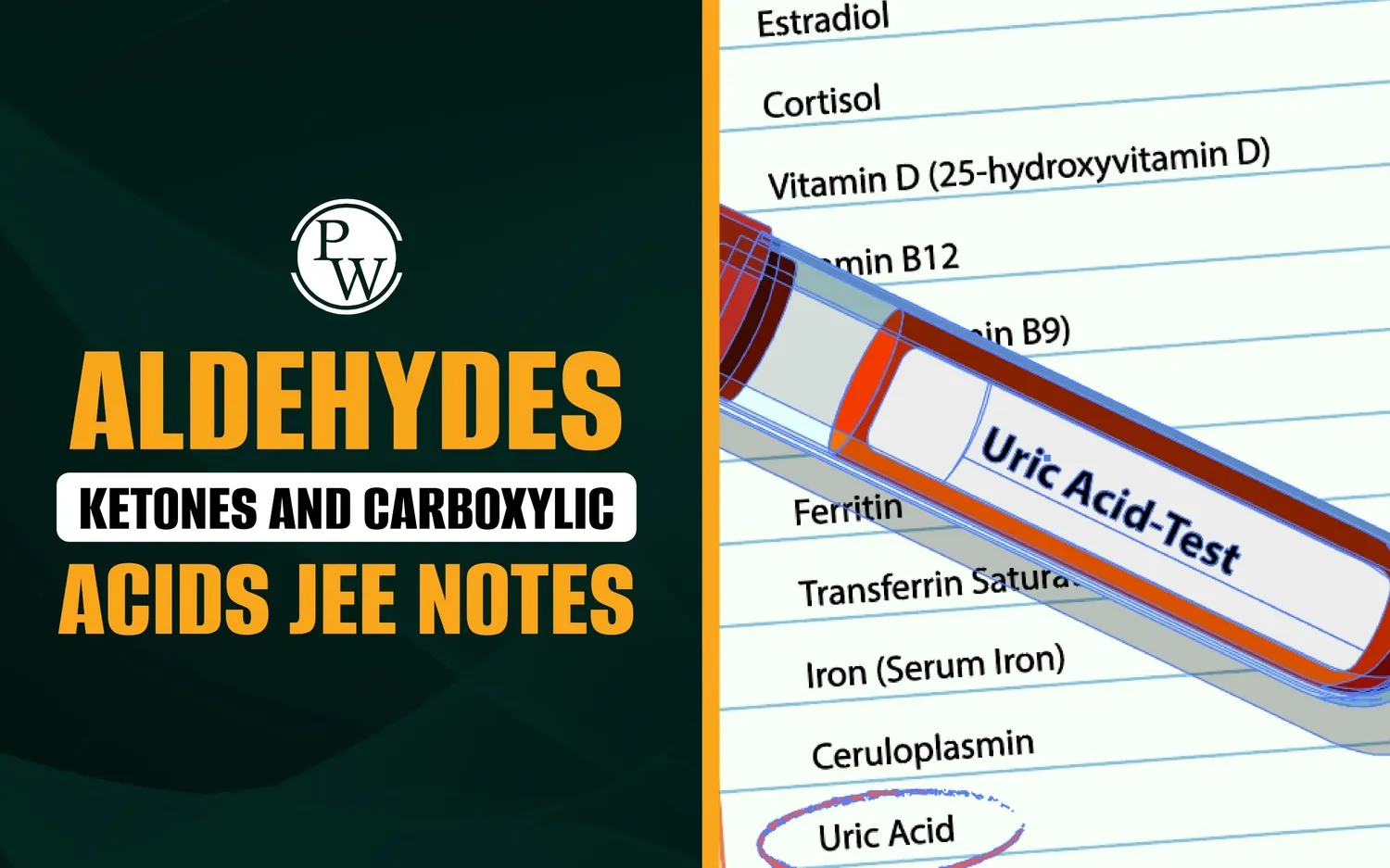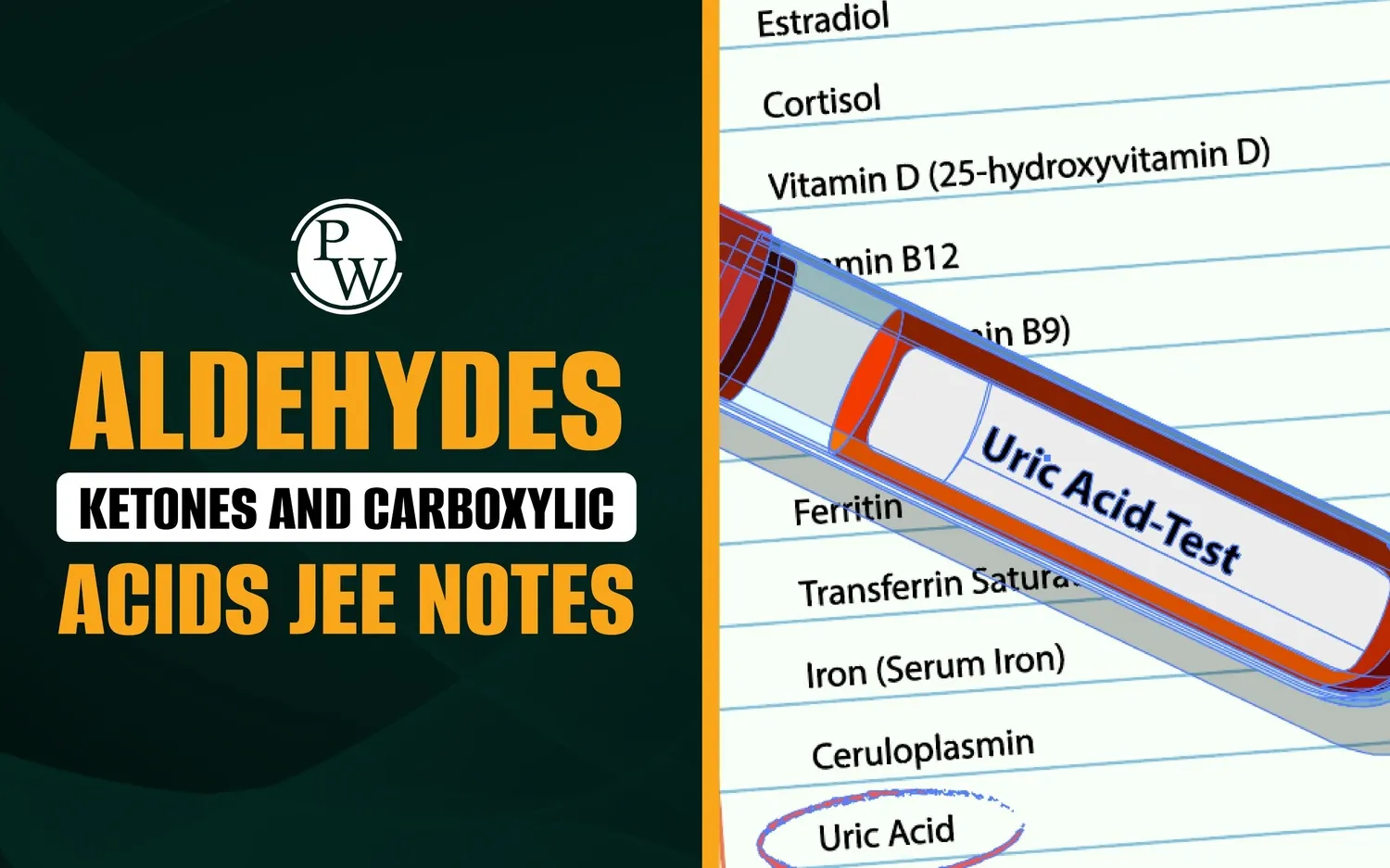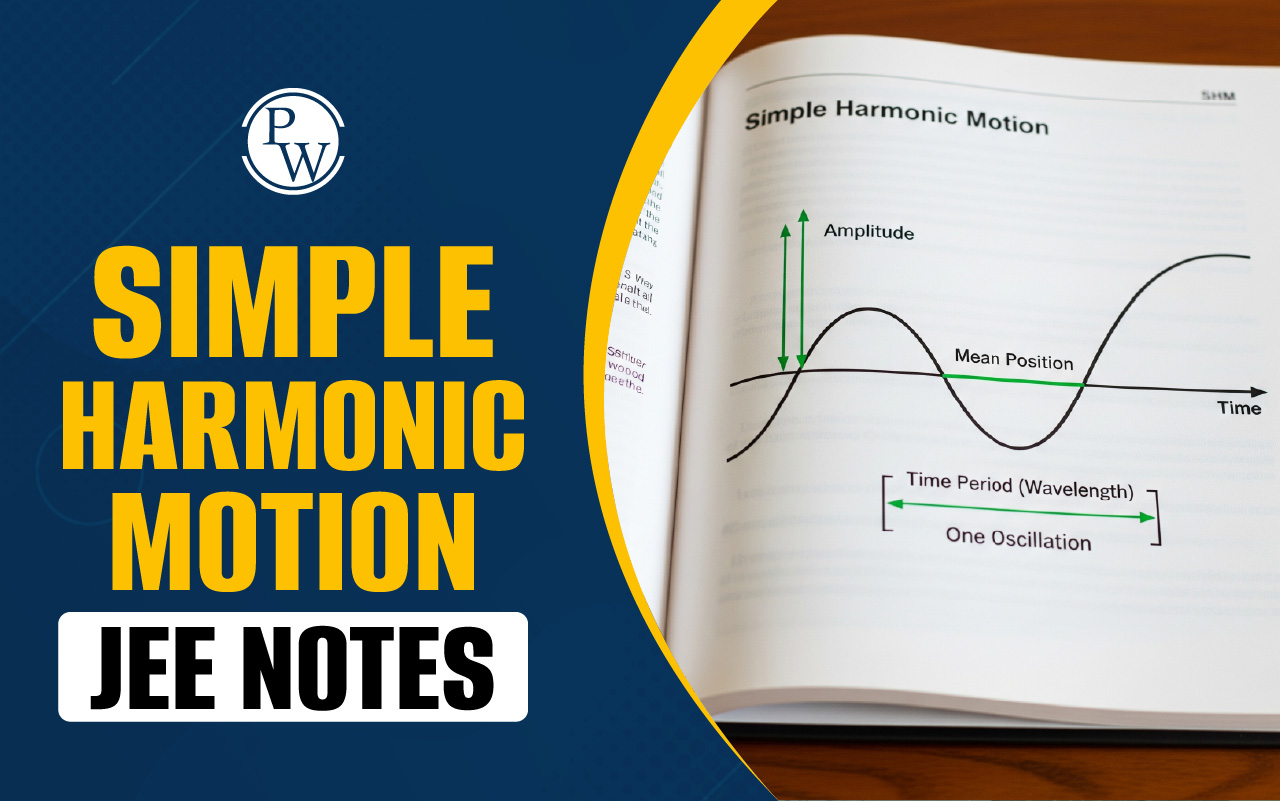

Aldehydes, ketones, and carboxylic acids are crucial organic chemicals made of carbon, hydrogen, and oxygen. They are found in many things around us like perfumes, medicines, and food items. Learning about these chemicals helps you understand basic chemistry. This knowledge is very important for Aldehydes, Ketones and Carboxylic Acids JEE exam preparation.
These chemicals have special functional groups. Aldehydes contain an "−CHO" group. Ketones feature a carbonyl group (>C=O) between two carbons. Carboxylic acids possess a "−COOH" group. Knowing their formulas and how they react helps you solve many questions in exams easily.
Aldehydes Ketones and Carboxylic Acids JEE Notes
Aldehydes, Ketones and Carboxylic Acids are key topics in JEE Chemistry that involve compounds containing carbon (C), hydrogen (H), and oxygen (O) atoms. These compounds have important functional groups like carbonyl (–CHO for aldehydes and >C=O for ketones) and carboxyl (–COOH for carboxylic acids).
Understanding their structures, preparation methods, and common reactions helps students solve many JEE questions effectively. Mastering these concepts is essential for scoring well in both JEE Main and JEE Advanced exams.
What Are Aldehydes, Ketones, and Carboxylic Acids?
Aldehydes, ketones, and carboxylic acids are chemicals that are made up of carbon, hydrogen, and oxygen atoms. They are found in many everyday things like perfumes, medicines, and food. Knowing about these chemicals helps us understand many things in science.
Aldehydes
Aldehydes are chemicals that have a special group called the "al" group. The general formula for aldehydes is R-CHO. R represents a carbon chain or a hydrogen atom. An important example of an aldehyde is formaldehyde (HCHO).
Ketones
Ketones are chemicals that have the C=O carbonyl group. This group is located in the middle of the carbon chain. The general formula looks like this: R-CO-R′. R and R′ are alkyl or aryl groups. Acetone CH₃–CO–CH₃ is a common ketone used as a solvent.
Carboxylic Acids
Carboxylic acids are organic acids containing the carboxyl group (–COOH). The general formula is R–COOH. Acetic acid (CH₃COOH), found in vinegar, is a prime example. This class is important in Aldehydes, Ketones and Carboxylic Acids JEE Notes.
Aldehydes Ketones and Carboxylic Acids JEE Formulas
Precise knowledge of molecular and general formulas is necessary for the exam. The IUPAC naming system is frequently tested. Below shows simple Aldehydes Ketones and Carboxylic Acids formulas JEE and their key structural points.
|
Type of Chemical |
General Formula |
Example |
|
Aldehydes |
R–CHO |
Formaldehyde (HCHO) |
|
Ketones |
R–CO–R′ |
Acetone (CH₃–CO–CH₃) |
|
Carboxylic Acids |
R–COOH |
Acetic Acid (CH₃COOH) (found in vinegar) |
Aldehydes Ketones and Carboxylic Acids JEE Noted PDF
Aldehydes, Ketones and Carboxylic Acids JEE Notes PDF is helpful for JEE aspirants as it provides clear formulas, key reactions in one place. It makes revision easy, quick, and organized, helping students practice effectively and score better in exams.
Aldehydes Ketones and Carboxylic Acids JEE Important Questions
Preparation for JEE means doing many practice questions. Here are some Aldehydes, Ketones and Carboxylic Acids JEE Notes important questions related to these chemicals:
-
What is the difference between aldehydes and ketones?
-
How do you identify a carboxylic acid from its formula?
-
Write the chemical formula of acetone.
-
Name an aldehyde used in preservation.
-
What is the common name of acetic acid?
Practicing these questions helps you understand Aldehydes, Ketones and Carboxylic Acids JEE Notes better and prepares you for the exam.
Aldehydes, Ketones and Carboxylic Acids JEE Notes PDF
Aldehydes Ketones and Carboxylic Acids JEE Solved Examples
Let’s see some simple Aldehydes, Ketones and Carboxylic Acids solved examples for JEE to understand how to solve problems related to these chemicals.
Example 1: Write the formula for formaldehyde.
Solution: Formaldehyde is an aldehyde. Its formula is HCHO. It has one carbon, two hydrogens, and one oxygen atom.
Example 2: Find the formula of acetone.
Solution: Acetone is a ketone. Its formula is CH₃–CO–CH₃. It has three hydrogens on each side of the carbonyl group.
Example 3: Is acetic acid an aldehyde, ketone, or acid?
Solution: Acetic acid is a carboxylic acid because it has the −COOH group.
Chemical Formulas and Uses
Here are Aldehydes Ketones and Carboxylic Acids chemical formulas and uses:
|
Chemical |
General Formula |
Example |
Use in Daily Life |
|
Aldehyde |
R–CHO |
Formaldehyde (HCHO) |
Used in disinfectants |
|
Ketone |
R–CO–R′ |
Acetone (CH₃–CO–CH₃) |
Used to remove nail polish |
|
Carboxylic Acid |
R–COOH |
Vinegar (CH₃COOH) |
Used in food and cooking |
Aldehydes Ketones and Carboxylic Acids JEE Main Notes
Aldehydes, ketones, and carboxylic acids are important organic compounds that contain a carbonyl (C=O) or carboxyl (COOH) group. These JEE main notes for Aldehydes Ketones and Carboxylic Acids provide a clear overview to help students grasp the key concepts efficiently and prepare well for exams:
|
Aldehydes, Ketones and Carboxylic Acids JEE Main Notes |
||||
|
Compound Class |
Defining Structure in Plain Terms |
Key Properties |
How We Get Them (Preparation) |
Real-World Use |
|
Aldehydes |
Has a central Carbonyl "part" (C=O) with at least one Hydrogen "arm" sticking out. (Looks like R-CHO). |
They are highly reactive because their structure makes the central Carbon very "open" to attack. |
Made by gently oxidizing alcohols (taking away some Hydrogen). |
Used in things like disinfectants and preservation liquids. |
|
Ketones |
Has the same central Carbonyl "part" (C=O) but has two carbon "arms" sticking out from it. (Looks like R-CO-R'). |
They are less reactive than aldehydes because those two carbon arms get in the way (steric hindrance). |
Often made from acid chlorides reacting with other carbon groups (like organometallics). |
Great at dissolving stuff; used as solvents (e.g., nail polish remover). |
|
Carboxylic Acids |
This group has the Carbonyl (C=O) plus an extra −OH "part" attached to the same carbon. (The entire group is −COOH). |
They are very "sticky" (highly polar) and easily form Hydrogen bonds, which makes them behave like acids. |
Also made by strongly oxidizing alcohols or by further oxidizing aldehydes. |
Used everywhere, from food additives (vinegar) to making plastics and medicines |
Aldehydes, Ketones and Carboxylic Acids JEE FAQs
What are aldehydes and how do they differ from ketones?
Why are formulas of aldehydes, ketones, and acids important for JEE?
How can I effectively prepare for questions about these chemicals?
Are there solved examples available for practice?
Can I find specific notes for JEE Main covering aldehydes, ketones, and acids?













